The first rides on public transit in London took place on May 24, 1875 with the service operating on Dundas Street between Richmond and Adelaide. A lot has changed over the past 150 years, follow along for a recap.
1875
- Legislature of Ontario authorizes the London Street Railway Company (LSR) to provide passenger service
- City of London Council grants the LSR the rights to “build, maintain and operate a street railway” powered by animal for 50 years.
- The LSR purchased land for a facility on Dundas Street (at Lyle) for $700, and awarded a contract to build three miles of track at a cost of $5,000(US) per mile.
- Service began on May 24, 1875, London’s population was 18,413.
- In 1876, LSR approved advertising on its cars (both interior and exterior) for $300 per year.
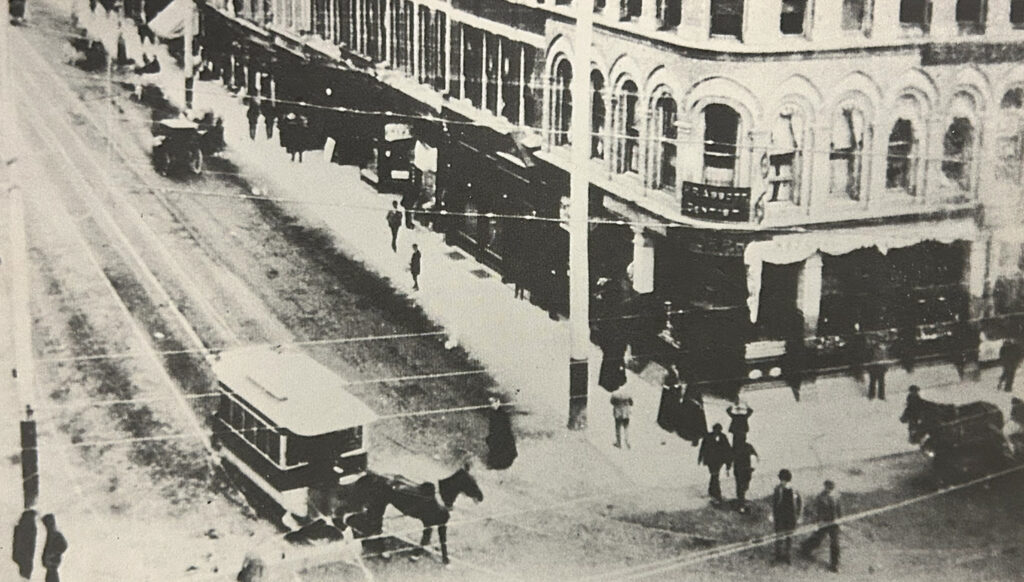
Fun Fact – Prior to the era of horse-drawn public transit, the city made little effort to remove snow from the streets, and rather just waited for horses and sleighs to pack it down, or for it to melt. When the LSR cleared snow and spread salt on the tracks, they were fined $5, and City Council prohibited snow removal and required the railway to use sleighs. Beginning in 1879, the LSR used covered sleighs drawn by horses in the winter months.
1885
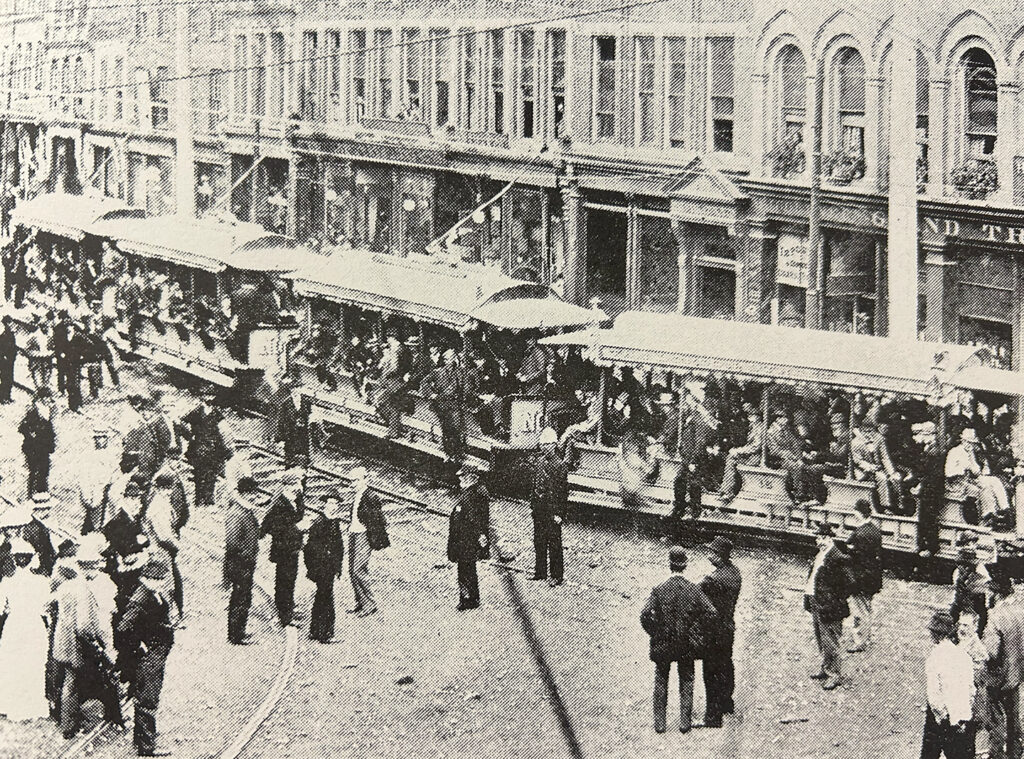
- By 1885, the stable of horses had grown from six to 146, and service had expanded beyond the Dundas corridor.
- In 1888 an application to the city was made to lay tracks south on Richmond to Horton or Bathurst Street, west to Ridout street and south across the Thames river on Victoria bridge.
- In 1891, the American Street Railway Association reported that electricity was the coming method to power streetcars, and LSR began thinking about a transition.
Fun Fact – Each of the horses in the stable travelled approximately 20 miles per day, but rested for up to three hours between trips.
1895
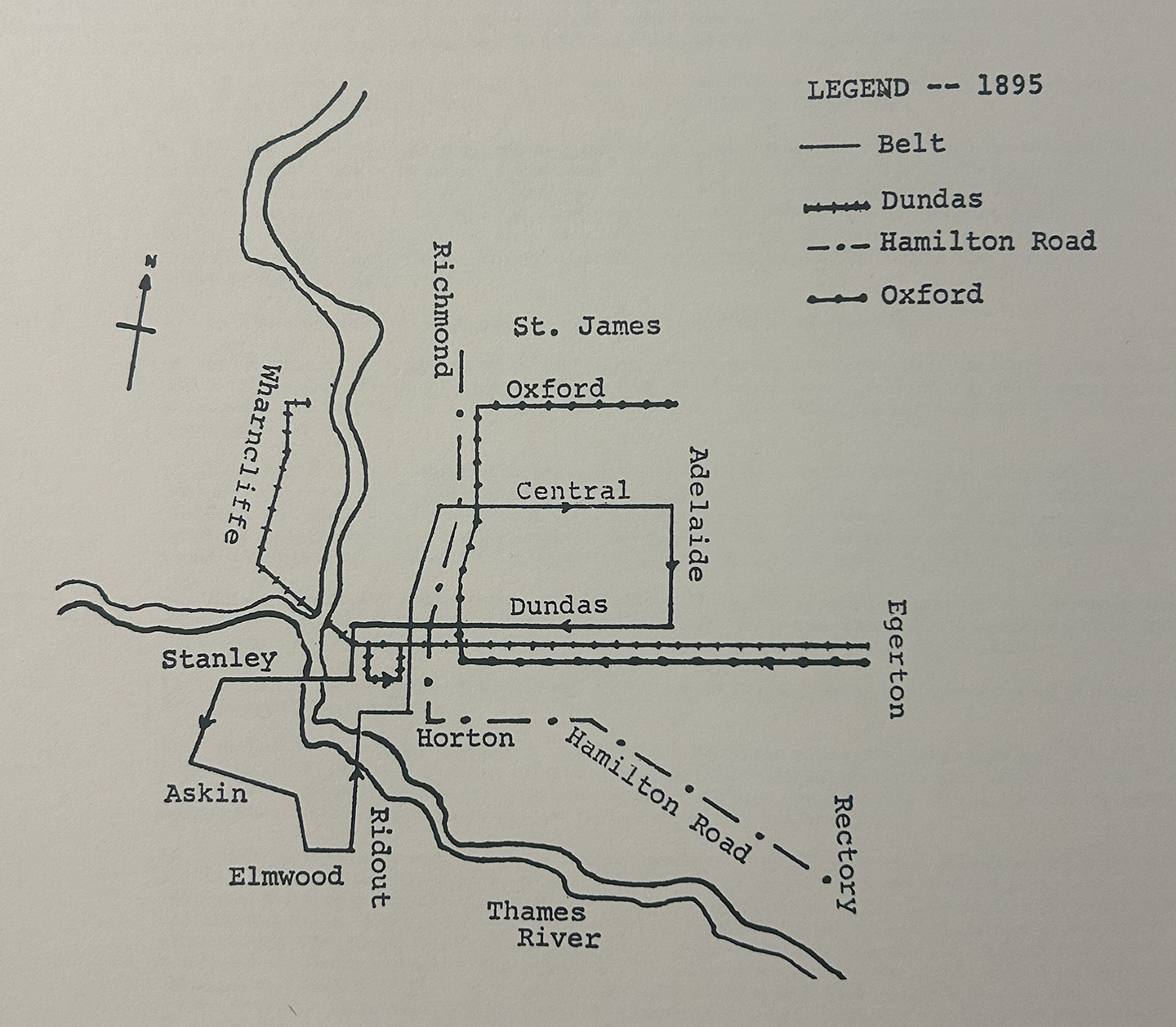
- In 1895 City Council passed a by-law to ratify an agreement with LSR to undertake a modernization program including a transition to electric powered transport. LSR in turn purchased land between Bathurst and Horton for a steam plant to generate the required electricity. New tracks for the electric street cars were laid during the summer of 1895.
- The planned 1895 launch of the new electric streetcar service was delayed due to a fire in the facility where the streetcars were being built.
- In 1896, the new cars, which were 30 feet long and included bench seating for up to 46 passengers were delivered. These cars also included an open rear platform that could accommodate up to 30 passengers to crowd on to.
- 1898, the first labour union was formed as Branch 97 of the Amalgamated Association of Street Railway Employees of America. The first strike occurred in October 1898, and lasted for 12 days and the ultimate settlement that resolved the strike provided motormen and conductors with greater than one year of service a 1/3 cent raise, taking them to 15 1/3 cents per hour.
- 1901, five additional street cars (40 feet long, with a seating capacity for 90 passengers) were purchased for the Springbank line to handle the large crowds.
- 1904, the Thames River flooded the Springbank route and washed out electricity poles and damaged equipment and coal at the generator site. In August of the same year, a fire destroyed a large portion of the bus barn on Lyle Street, which was subsequently rebuilt on the same site.
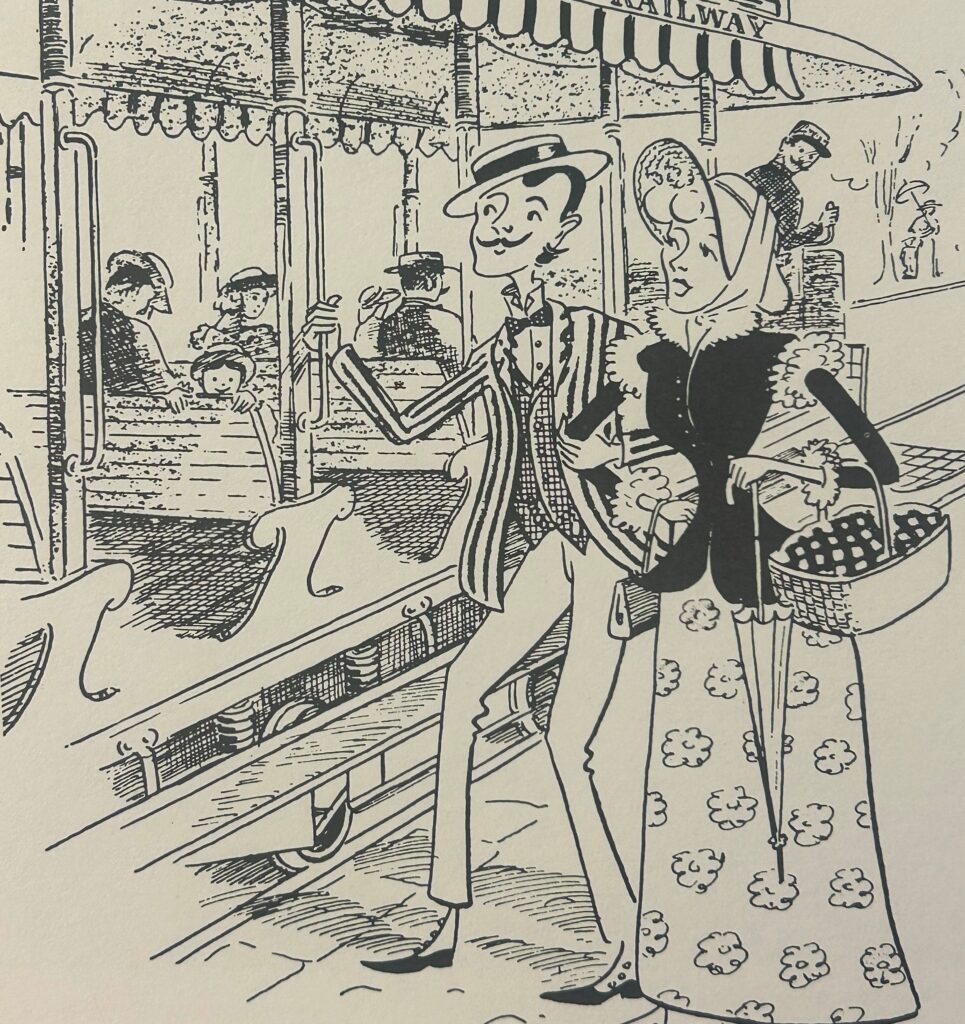
Fun Fact – During this period, the LSR introduced special cars that could be rented for theatre parties, dances or other special events. They were referred to as “Moonlight Excursion Cars”, and were adorned with clusters of electric lights to enhance the atmosphere.
1905
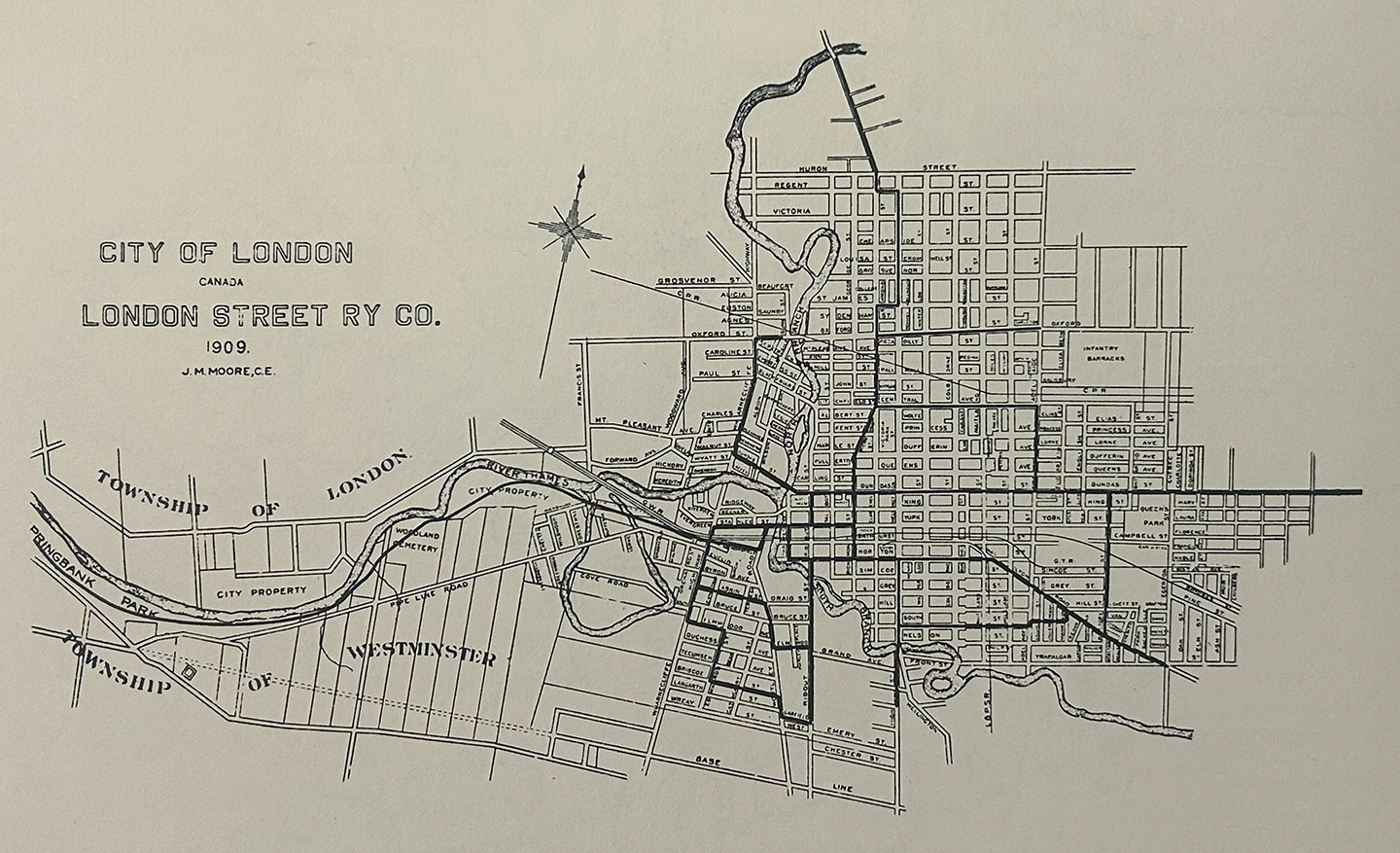
- 1905, office space was built just east of the Lyle Street barns and continued to be utilized until 1965.
- 1907 a second barn for streetcars was built to accommodate the growing fleet required to service expansion as the city continued to grow.
- 1907 the decision was made to install a 320 ampere storage battery plant to address concerns with respect to power availability for the fleet. This solution worked for two years until supply again became an issue.
- Also in 1907, City Council placed a question on the ballot for Londoners to consider public transit services to operate on Sundays and response was overwhelmingly in favour. The change required the Ontario government to ratify which they did not.
- 1910 Ontario government passed legislation that only cities with a population of 50,000 or greater could operate public transit on Sundays. London had not yet reached that threshold, and as such, service was not extended until 1914, after an annexation took place that resulted in London’s population meeting the threshold.
- In 1913, LSR purchased five “pay as you enter cars”, the first in the fleet at a cost of $3,338 each.
Fun Fact – Wage rates for Motormen and Conductors in 1914 were $0.23 per hour.
1915
- By 1916, approximately 3,000 Londoners had gone overseas with the armed forces, however ridership was not reduced given the approximate 12,000 soldiers that were stationed at the Wolseley Barracks who made regular use of the service.
- The LSR had 43 employees who served in uniform during the war.
- In 1918, a new local negotiated an additional $0.02 per hour to make the top hourly rate for conductors and motormen $0.28.
- In 1922, the City authorized the use of one-man cars in an effort to reduce the costs of service delivery.
- In 1923, the LSR completed an agreement to allow the operation of a gasoline-powered bus by a third party along the Quebec Street corridor.
Fun Fact – A change in fare structure approved in 1922, resulted in a new limited ticket fare of 22 tickets for $1.00 with their use being limited to the hours of 6:00am to 8:30 am and 5:00pm to 6:30pm essentially establishing peak period operating times.
1925
- In 1929, LSR purchased five gasoline-powered buses at a cost of $7,700 each to be used to service North London, making connections to the streetcars.
- Competition from independent bus operators resulted in steep declines in ridership and revenue from the Springbank line in 1928, and at the end of that year, winter service to Springbank part ceased.
- In 1933 a new fare category for students under the age of 19 was introduced in an effort to increase ridership.
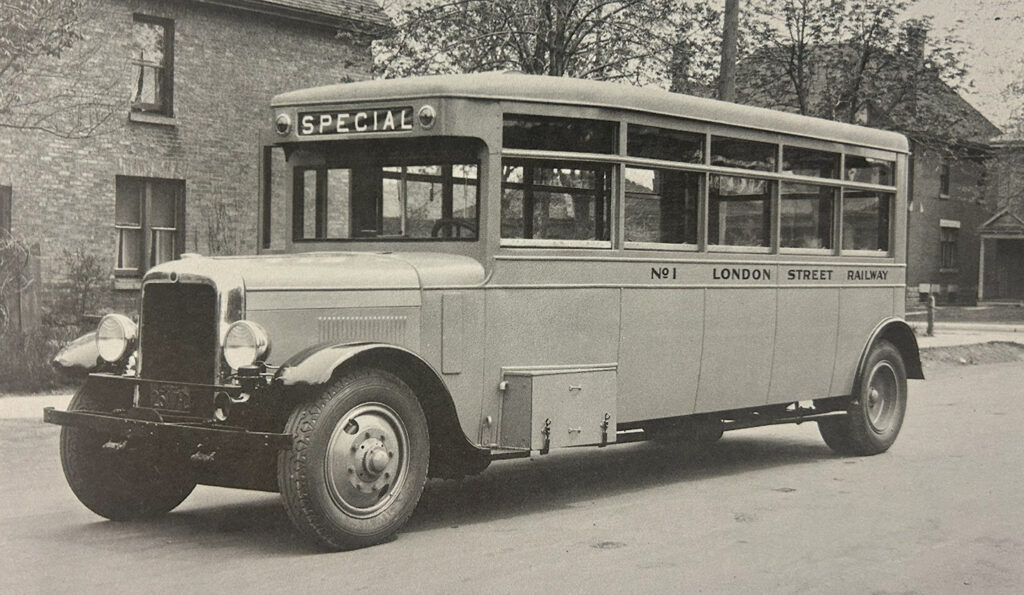
Fun Fact – The first Canadian made bus began operation at LSR in 1931, it featured a rear door exit operated by a step treadle.
1935
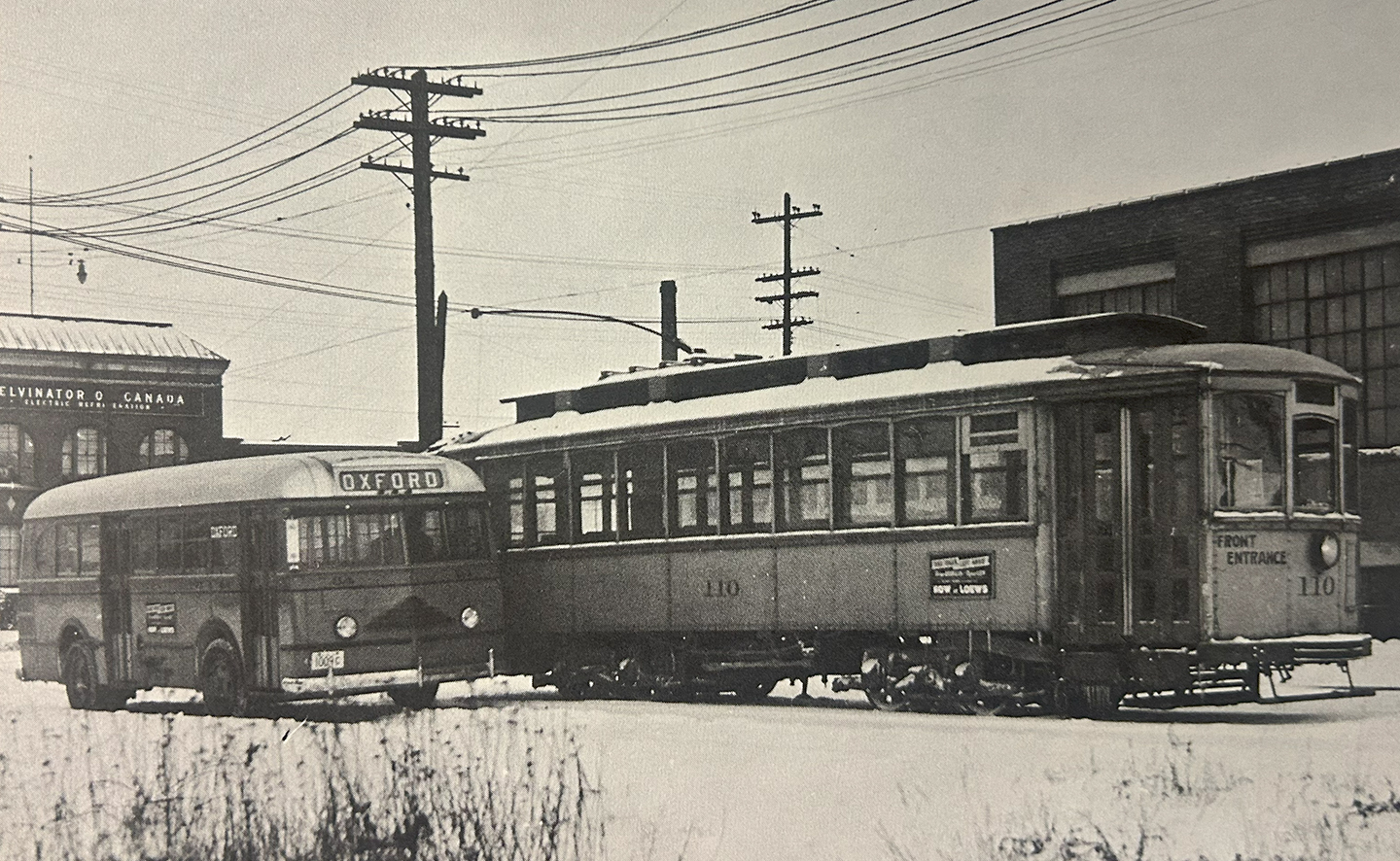
- 1936 – first bus garage completed, with a capacity for 24 buses and three service trucks.
- 1937 – two 15,000 gallon tanks were installed near Burwell Street to provide fuel for the growing bus fleet.
- 1940 – approval granted for a ten-year contract to eliminate electric streetcars and transition services to bus only. November 27, 1940 was the last day that streetcars ran in London.
- 1944 – LSR built a mobile ticket and information office which was parked at Dundas and Richmond each day and returned to the garage each night at the end of service.
Fun Fact – By 1944, the fleet was comprised of 90 buses, all street cars had been retired.
1945
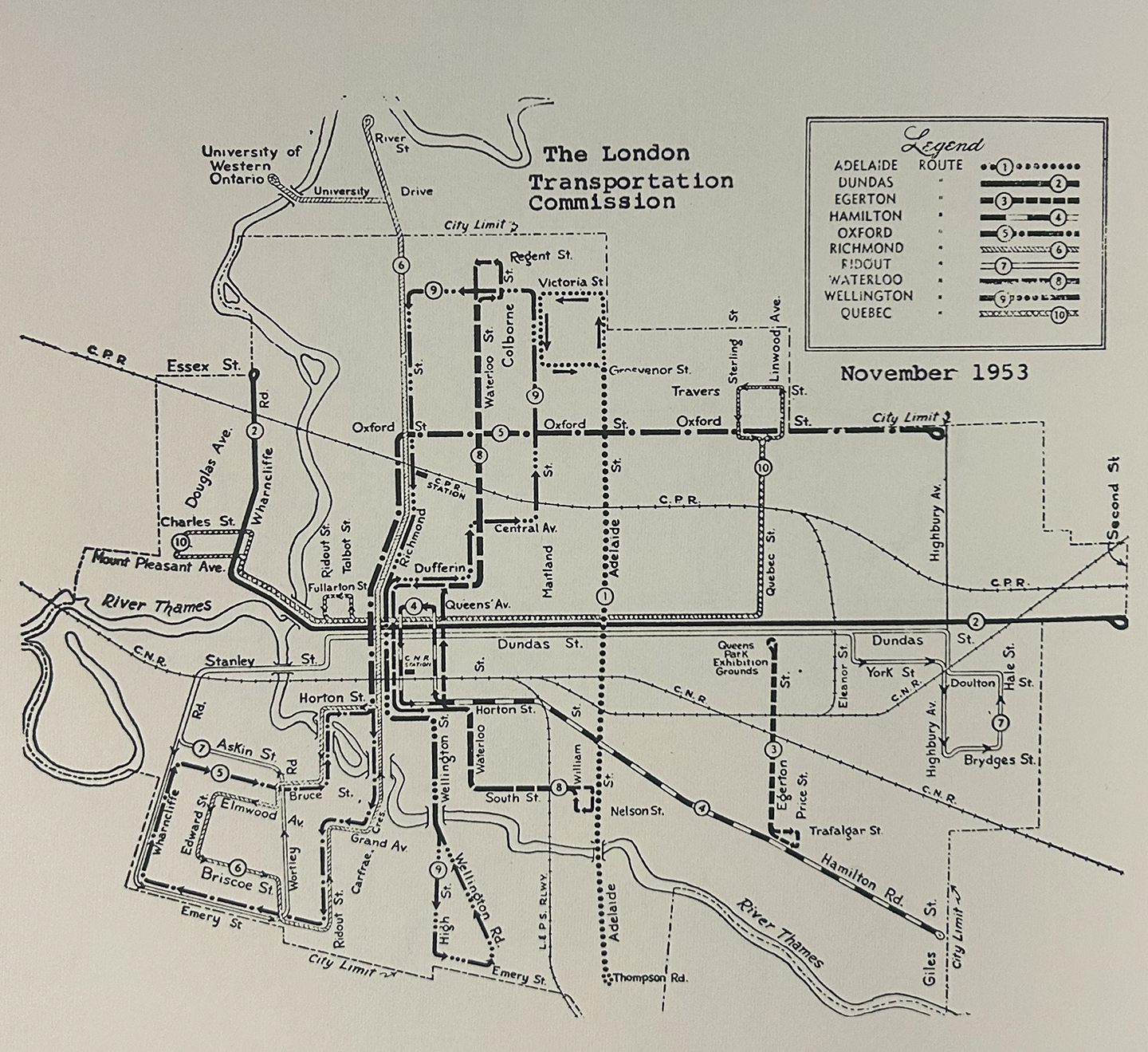
- 1948 wages increased to $0.87 per hour for bus operators, $0.95 per hour for bus mechanics, $0.77 per hour for general service.
- In 1948 fares were increased to $0.10 cash, 3 tickets for $0.25 or 7 tickets for $0.50.
- In 1951 the City of London purchased LSR and formed the London Transportation Commission to operate the service with the caveat that revenue collected must cover the operating costs.
- 1951 five major routes were extended to provide for wider city coverage.
- 1953 new employee contributory pension plan takes effect.
Fun Fact – On May 7, 1945 transit service was ended at 6:30pm to allow for celebrations of the end of the war in Europe.
1955
- 1958, new buses delivered by Canada Car had single seats on the left side to provide additional space for standees during rush hour periods.
- 1958 permission granted to LTC from the Province to provide certain services outside of city limits.
- In 1961, LTC introduced zone fare structure, requiring passengers to pay a double fare on longer suburban routes.
- 1964, City of London agrees that independent bus companies could operate in areas of the city where LTC service did not operate.
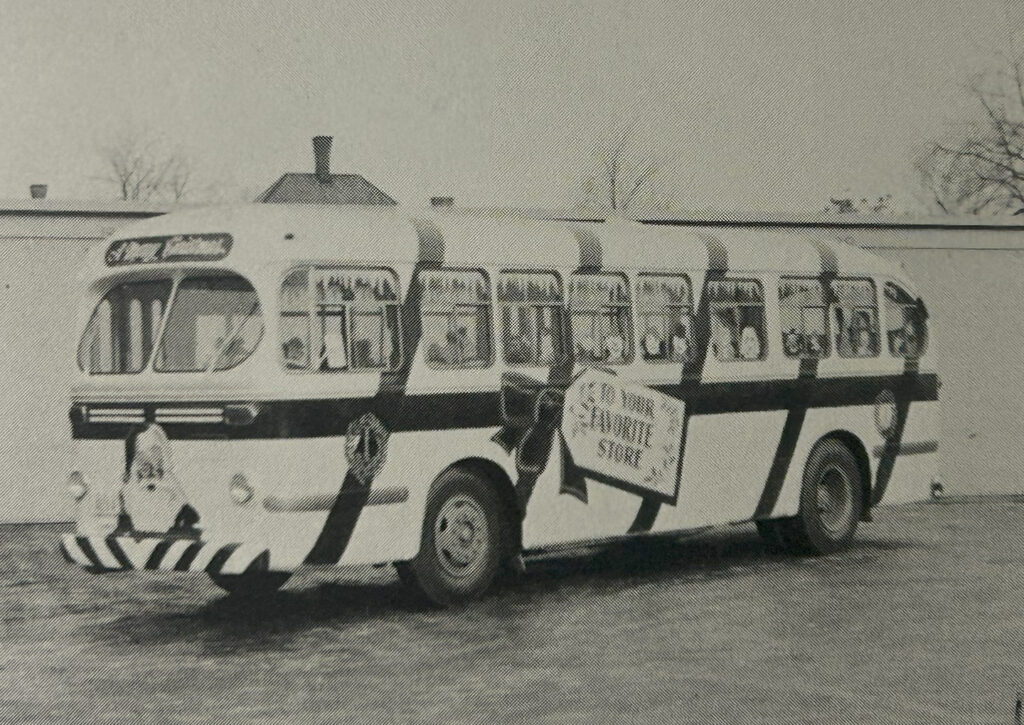
Fun Fact – 1958 – First bus decorated for Christmas made an appearance, a tradition that continues today.
1965
- 1965 – fares increased to $0.25 cash or 5 tickets for $1.00 and the two-zone fare was eliminated.
- 1965 – City took over responsibility for snow removal and sanding of LTC routes from LTC.
- A total of $100,000 was allocated for bus replacement covering 10 buses in each of the years 1966, 1967 and 1969.
- 1967 – bus fleet had grown to 106, which included 28 buses that were over 20 years old.
- 1971 fares increased to $0.30 cash or 4 tickets for $1.00.
- 1971 – City council agrees to subsidize transit operations to cover budget shortfall, marking the first time the service was not self-sustaining.
- 1972 LTC moves to a new facility at 450 Highbury Avenue North.
- 1972 the City received approval from the Province to make grants to the LTC to cover the revenue loss associated with reduced fares for seniors.
- 1973 – first express bus service is introduced “Argyle Express” between Dundas and Clarke and Downtown with a travel time of 13 minutes.
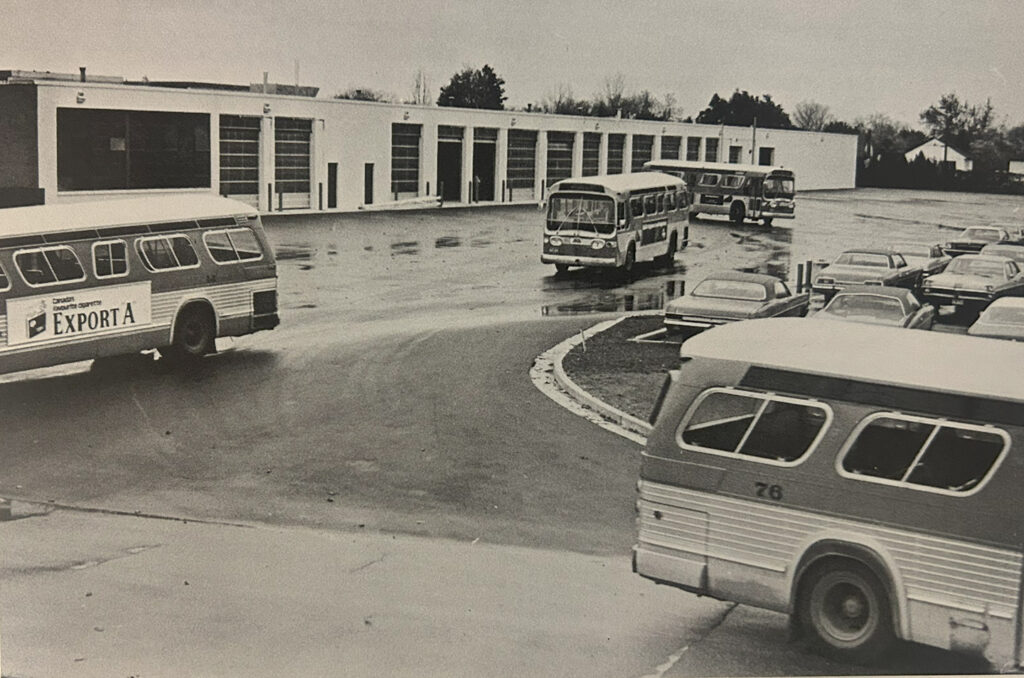
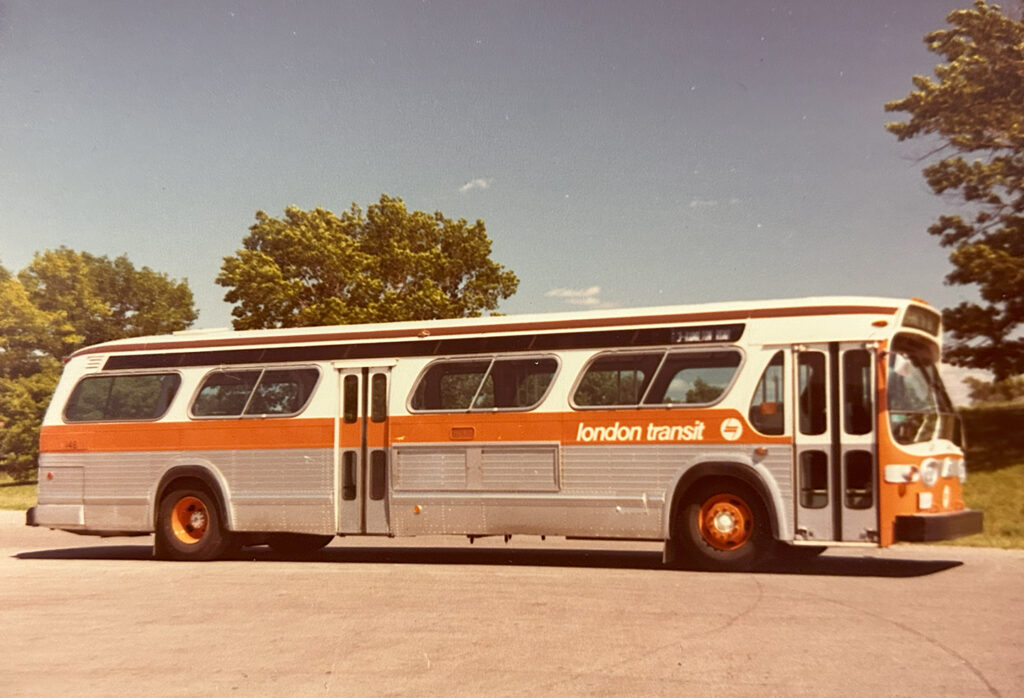
Fun Fact – In 1974, LTC rebranded and changed the colour scheme to orange and brown from the original black and green. Buses were painted in the new colours and Operator uniforms were changed to the new corporate colours.
1975
- 1975 – LTC celebrates 100 years of public transit service in London.
- 1979 – first seven bus shelters approved for installation.
- 1979 – garage expansion at Highbury facility.
- 1980 – monthly passes introduced at a cost of $18 per month.
- 1982 – Free New Year’s Eve service introduced.
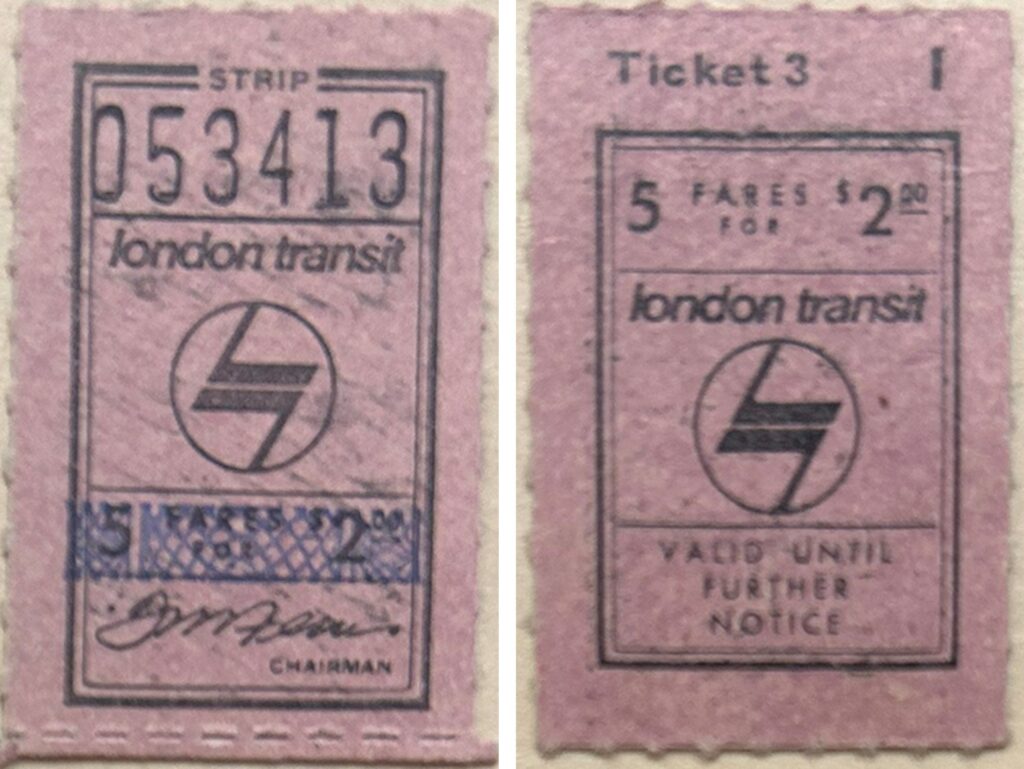
Fun Fact – Fares went from $0.04 per ride in 1875 to $2.65 per ride (adult ticket fare) in 2025. While in 1975 LTC Operators stopped providing change on the bus and exact payment or tickets were required.
1985
- 1992 first Compressed Natural Gas buses introduced into the fleet.
- 1992 first low-floor accessible buses introduced into the fleet with features including a kneeling feature and a ramp at the front door.
- 1993 additional bus fueling and storage building built on 450 Highbury property which included indoor fueling for Natural Gas buses.
Fun Fact – In 1994 the first Automatic Vehicle Location system was installed on the bus fleet, providing for real-time tracking of all buses in service.
1995
- Business Planning process introduced the first multi-year business plan covering 1995-1997, with a them of “Bring focus and direction to the organization, stopping the decline”.
- LTC assumes responsibility for specialized services in 1997.
- 1996 – 90 minute transfers introduced for passengers paying cash or ticket fares.
- 1996 – Community Bus Service launched.
- 2001 LTC adopts new eligibility criteria and assessment process for paratransit services.
- 2002 and 2003 – new bus terminals open at Argyle and Masonville malls.
- 2003 first 60’ articulated buses introduced to the fleet.
Fun Fact – In 1995, corporate logo was updated and colours were changed to blue and green and employee uniforms were updated to the new colours.

2005
- 2006 – Natural Gas fueling station onsite decommissioned
- 2008 – Tuition pass program allowing all Western University students unlimited access to transit for 8 months a year is implemented
- 2009 – ground breaking ceremony for satellite transit facility located at 3508 Wonderland Road
- 2009 – first bike racks installed on conventional buses
- 2010, first hybrid diesel/electric buses introduced into the fleet
- 2011 – buses begin operating from satellite facility
- 2012 – onboard audio/video surveillance installed on conventional bus fleet
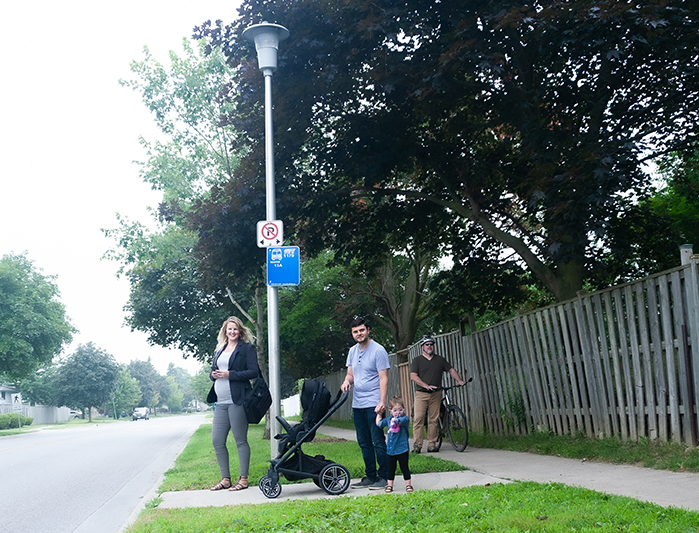
Fun Fact – In 2012, all Bus Stop plates in the city were replaced with an updated design and colour.
2015
- 2015 – Smart cards launched as additional method of fare payment.
- April 2018 – All bus service permanently removed from Dundas Street between Wellington and Ridout.
- 2020-2022 transit services severely impacted by the global pandemic.
- 2022 – Funding approval granted for a test fleet of Electric Buses and related charging infrastructure.
- 2022 – Operator barriers installed on entire fleet.
- 2024 – Funding approval received for the demolition and replacement of the Highbury Facility.
Fun Fact – 143 years after the first public transit service began operation on Dundas Street in the downtown core, public transit services were removed from Dundas Street between Wellington and Ridout (April 2018).
2025
London Transit celebrates 150 years of traveling together!
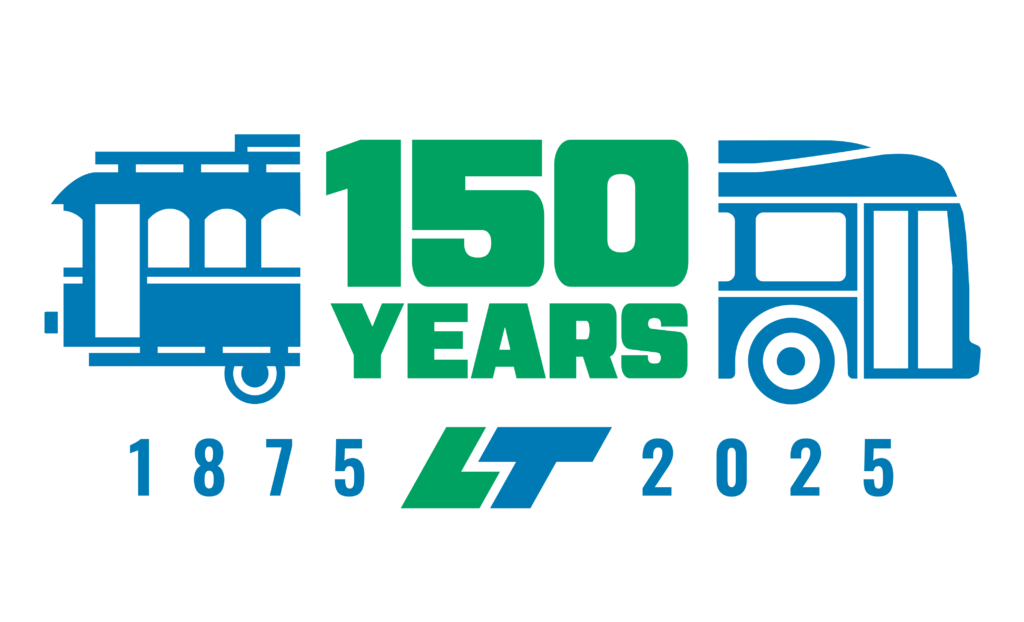
Information and images for some sections are used from C.K. Morningstar “From Dobbin to Diesel”, 1973.